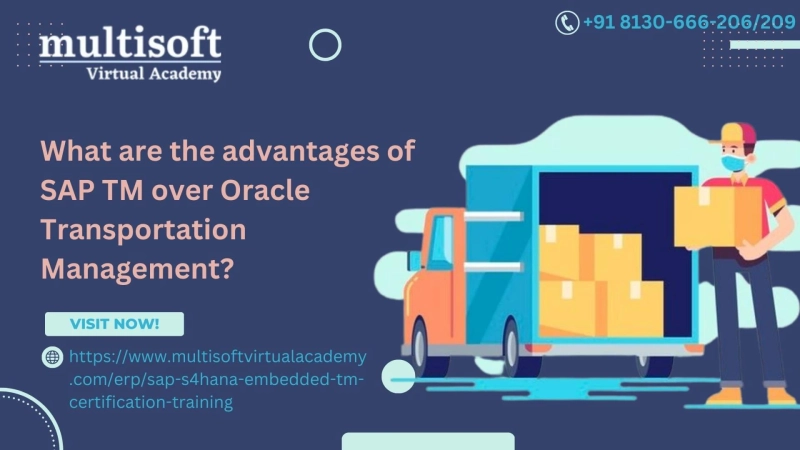SAP Transportation Management (SAP TM) and Oracle Transportation Management (OTM) are two of the most widely used transportation management systems in the market. Both offer a comprehensive suite of transportation planning, execution, and monitoring capabilities. However, there are some key advantages that SAP TM offers over Oracle Transportation Management. In this article, we will discuss some of these advantages.
Integration with SAP ERP One of the biggest advantages of SAP TM is its integration with SAP ERP. SAP TM is built on the same technology platform as SAP ERP, which allows for seamless integration between the two systems. This integration provides users with a unified view of their logistics operations, enabling them to make informed decisions about their transportation processes.
Enhanced Analytics Capabilities SAP TM offers enhanced analytics capabilities compared to Oracle Transportation Management. SAP TM provides a comprehensive set of pre-built reports and analytics, which enables users to monitor and analyze their transportation processes in real-time. This allows users to identify potential issues early and take corrective action before they become bigger problems.
Better Planning Capabilities SAP TM offers better planning capabilities compared to Oracle Transportation Management. SAP TM enables users to plan and optimize transportation processes based on a wide range of criteria, including transportation costs, delivery times, and carrier performance. This enables users to create more efficient and cost-effective transportation plans.
Improved Carrier Collaboration SAP TM offers improved carrier collaboration capabilities compared to Oracle Transportation Management. SAP TM enables users to collaborate with their carriers in real-time, providing them with visibility into their transportation processes. This helps to reduce transportation costs and improve service levels.
Global Support SAP TM offers better global support compared to Oracle Transportation Management. SAP TM supports multiple languages and currencies, making it easier for users to manage their transportation processes across different regions. In addition, SAP TM provides support for a wide range of transportation modes, including air, sea, and rail, enabling users to manage their transportation processes more efficiently.
Flexible Architecture SAP TM offers a more flexible architecture compared to Oracle Transportation Management. SAP TM can be deployed on-premise or in the cloud, providing users with greater flexibility in how they manage their transportation processes. In addition, SAP TM can be customized to meet the specific needs of each user, enabling them to create a transportation management system that meets their unique requirements.
Better User Experience SAP TM offers a better user experience compared to Oracle Transportation Management. SAP TM has a modern user interface that is intuitive and easy to use, making it easier for users to manage their transportation processes. In addition, SAP TM provides users with a personalized experience, enabling them to customize the system to meet their specific needs.
In conclusion, SAP Transportation Management offers several advantages over Oracle Transportation Management. Its integration with SAP ERP, enhanced analytics capabilities, better planning capabilities, improved carrier collaboration, global support, flexible architecture, and better user experience make it the preferred choice for many organizations. If you are looking to implement a transportation management system, SAP TM is definitely worth considering. To learn more about SAP TM, you can enroll in SAP TM (Transportation Management) Training Certification Course offered by Multisoft Virtual Academy. These training programs provide a comprehensive understanding of SAP TM and enable participants to develop the skills required to manage and implement SAP TM solutions effectively.


